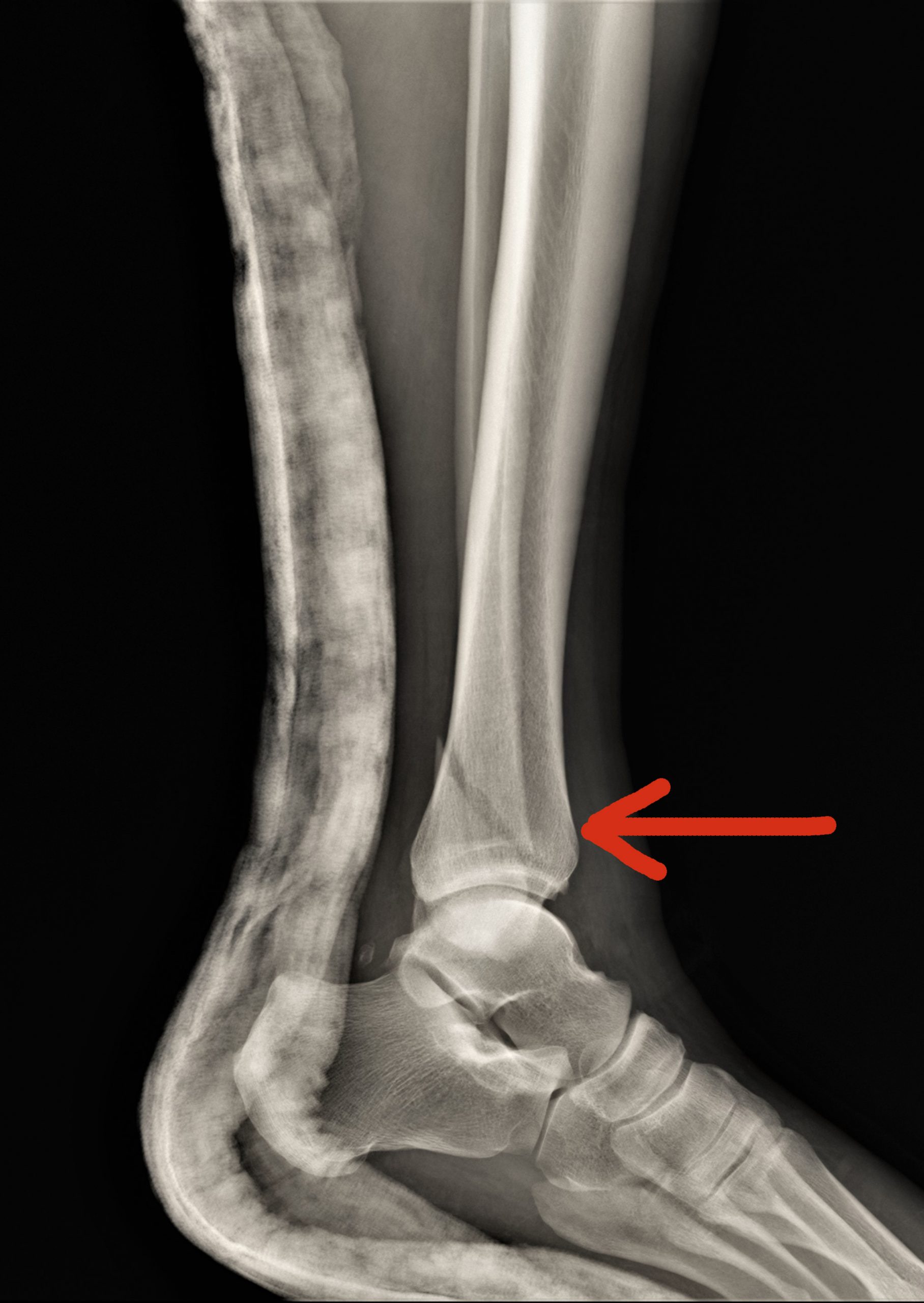Ankle Fractures
An ankle fracture can vary between small cracks in your bones to sever breaks that pierce the skin. A minor hairline crack can heal on its own, a sever break may need surgery. A crack or break can occur in one or more of the 3 bones in your ankle, the tibia, fibula, and talus and this can be a side effect of a sprain.
If you are in severe pain, your ankle is at an odd angle, if your foot feels numb or your toes have gone blue or white, seek immediate urgent medical help.
Rachel Miller is a highly experienced podiatrist who helps many people with their rehabilitation after an ankle fracture. Please see below if you want more detailed explanation of ankle fractures.
A Call 020 8348 5553 to make an appointment
Ankle Fractures
Symptoms of ankle fractures
Symptoms can include:
- pain, throbbing, especially when putting weight on your ankle
- swelling
- bruising
- stiffness
- a fever
- redness
- tenderness
See a medical practitioner if you suspect you have an ankle fracture. You may need to have an ultrasound, CT scan or MRI to diagnose your ankle fracture.
Causes of ankles fractures
A fractured ankle may occur from twisting your ankle from a simple misstep or fall, or from direct trauma during a sports injury, for example. Some foot structures and conditions are more prone to twisting an ankle which can result in a fracture.
Treatment of ankle fractures
Every ankle injury is unique and needs its own treatment and rehabilitation. Depending of the severity of your fracture, you may initially use the PRICE regime while waiting for medical attention:
- Protect – protect the area of injury
- Rest – rest your ankle
- Ice – apply ice packs
- Compression – use an elasticised bandage to help reduce further swelling
- Elevation – keep the ankle elevated if possible
You may need surgery in an unstable fracture, possibly with plates and screws, to stabilise your ankle. Or if your fracture is stable, you may be given a protective splint and monitored to see how your healing progresses. You may be given a removable cast boot and exercises and you should follow the instructions of your medical practitioner carefully to best promote healing.
Depending on your medical condition and the severity of the fracture, healing can take a minimum of 6 weeks before weight bearing and 12 weeks minimum before starting light exercise. It can take up to year for an ankle fracture to heal.
If you have suffered from an ankle injury, an experienced podiatrist may be able to help you with your rehabilitation. You may benefit from specialist treatments, such as a biomechanical assessment.
Further treatments can include:
- footwear advice
- heel pads
- self-help advice
- tailored exercise and stretching regimes
- an orthotic insole
You may be prescribed an orthotic insole as part of your treatment plan. A bespoke orthotic insole supports and cushions the foot and may reduce pain on impact on walking and running. An orthotic insole can to help correct overpronation, where a foot rolls in during gate or supination, where a foot rolls out during gate, which may stress and strain the ankle, cause instability, sprained ankles and ankle fractures.
Contact the Centre for an appointment on 020 8348 5553
Rachel Miller is a highly experienced podiatrist specialising in biomechanics who sees many patients for ankle fractures. Her clinic, Highgate Podiatry, is in Highgate Village, 14 Pond Square, N6 6BA, London. Clinics are held every Sunday, Wednesday and Thursday. Please contact the clinic for an appointment on 020 8348 5553. For the clinic’s address, map and directions see the Contact page and for information about orthotic insoles and biomechanics see the Biomechanics page.
Links to Services:
Links to Conditions Treated Include:
- Achilles tendinopathy
- Ankle fractures
- Ankle injuries
- Arthritis
- Back pain
- Bunions
- Corns/Calluses
- Diabetic care
- Flat feet
- Fungal toenail/athlete’s foot
- Haglund’s deformity
- Hammer toe and mallet toe
- Heel pain
- High arches
- Hypermobility
- Ingrown toenail
- In-toeing, toe walking, curly toes
- Knee injuries
- Metatarsalgia
- Morton’s neuroma
- Osgood-Schlatter disease
- Overuse injuries
- Patella tendinopathy
- Patellofemoral pain syndrome
- Plantar fasciitis
- Sever’s disease
- Sprained ankles
- Stress fractures
- Tarsal tunnel syndrome
- Toenails






